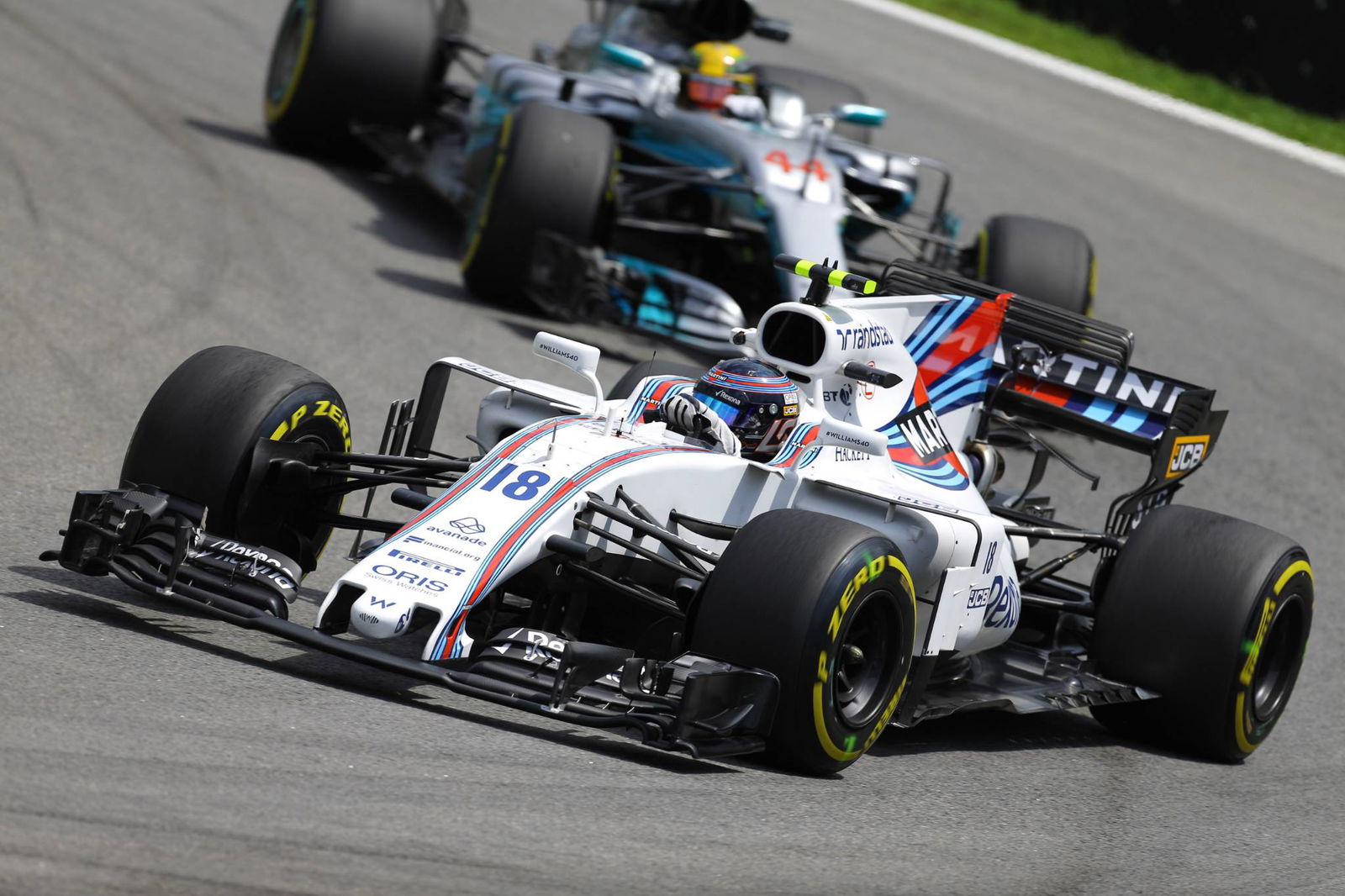Grand Prix Driver review - The final act in the McLaren-Honda tragedy
The rise of streaming services such as Amazon Video and Netflix has opened up a new wave of programming options in recent years, boasting big budgets and wide-reaching audiences that make it a lucrative market.
Sports teams and leagues have been quick to capitalise on this bandwagon, opening their doors for more fly-on-the-wall documentaries, but it was not until 2017 that Formula 1 caught up.

The rise of streaming services such as Amazon Video and Netflix has opened up a new wave of programming options in recent years, boasting big budgets and wide-reaching audiences that make it a lucrative market.
Sports teams and leagues have been quick to capitalise on this bandwagon, opening their doors for more fly-on-the-wall documentaries, but it was not until 2017 that Formula 1 caught up.
McLaren became the first team to open its doors, announcing last spring it was working with Amazon on a new series giving unprecedented insight into the team. The fruits of their labour, entitled ‘Grand Prix Driver’, was released on Amazon Video last Friday, offering F1 fans the chance to binge their weekend away.
Yet here lies one of the stand-out sticking points of the series: you cannot really binge it. With just four episodes coming in at just under half an hour each, it was easy to sweep through the entire series in one sitting through the evening. A royally-good binge leaves you eight hours deep into a series, staring at your own lethargic reflection when the TV asks if you’re actually still watching (the ultimate form of judgement). Given both of Amazon’s NFL series entitled ‘All or Nothing’ ran to eight episodes of 45 minutes, it’s disappointing there isn’t any more to watch through.
It should be taken as a compliment, though. The reason you’re left wanting more is because the series is very, very good. It has broken totally new ground in F1, hopefully paving the way for the future. While there is a smattering of FOM footage in the show, it is understood restrictions over what could be shown from the season - nothing features from any 2017 grand prix - caused the show to be capped at four episodes, ending with the ill-fated pre-season test in Barcelona when the cracks in McLaren-Honda became too great to gloss over.
Much of the spotlight of the show falls on 2017 rookie Stoffel Vandoorne as he experiences his first F1 pre-season, ranging from intensive physical training to sponsor events and the car launch itself. It is a really good peek at the efforts that go into making an F1 team tick off-track a well as on it, and also shows a more personal, human side to Vandoorne, who was largely overshadowed by the Fernando Alonso hype through last year.
Alonso himself does feature heavily, with his hunger to win and be successful being as clear as ever. The damning indictment offered after testing comes, fittingly, from Alonso: “This is really a s**t engine, a s**t power unit.” Racing director Eric Boullier’s admission in a meeting with Jonathan Neale that he was “100 percent sure” Alonso would leave is a sign of the chaos that reigned at the team.
Said chaos is the rawest part of this series. We all read the reports about how things weren’t looking good for McLaren-Honda early in 2017, but to see it unfolding makes it far starker and easier to understand. McLaren is not totally blameless: problems with parts, such as producing just a single floor for the launch, the planned shakedown at Silverstone and testing, show the team’s own internal struggles. However, the explanation of the redevelopment of 13,500 new parts for the 2017 car is a good way of displaying to new fans just how mighty the task of racing in F1 is.
The hide-behind-your-sofa moment comes when McLaren takes delivery of the Honda engine for the first time, only to find that it firstly won’t fit onto the car due to an issue connecting the engine and the gearbox, and then that it will not fire up electronically due to a software issue. Grimaces and confusion from the McLaren staff and occasional struggles communicating with Honda’s engine team put the writing on the wall for the season that would ensue. Chief Operating Officer Simon Roberts sums it up bluntly: “It’s mildly out of control around the factory. I’ve never seen it quite as bad as this.”
There are moments when the series feels less like an insight into the runnings of an F1 team and more as a final parting shot at Honda. The worst offender is a staged scene at pre-season testing where three of the mechanics discuss just how bad the Honda engine is, claiming Alonso said it was “like driving a Honda Civic”. It may be unavoidable to not play to the cameras if you know they are there, but this felt uncomfortable and forced as a way to stick the point to Honda. There is also a lack of insight into the Japanese manufacturer’s own efforts and goings-on. F1 chief Yusuke Hasegawa only features briefly at the car launch - there’s no right of reply.
Like all great tragedies, this story leaves us to speculate about what might have been had the McLaren-Honda partnership gone as planned.
The series ends with Neale - who, it must be said, comes across superbly as a leader through all four episodes - giving a frank talk to the McLaren team after pre-season testing. “As far as I’m concerned, the McLaren team got the job done through the winter,” he said. “A line has been crossed. We’ve done that experiment about trusting what is going to happen. We need to find a new way, a new plan. McLaren will not travel hopefully during the course of this season.”
His prophecy rings true. Simplified on-screen stats in the closing moments compare McLaren to Mercedes, showing just how far off the pace it is, before a final in-season (and, again, staged) press briefing between Brown and two journalists in Singapore, confirming the split with Honda and switch to Renault.
Squeezing March to November into just a few minutes is a tough task that will leave F1 fans wanting more, but given the limitations, McLaren did a good job of reflecting its disastrous season in just a couple of hours. Pre-season testing acts as the perfect microcosm to make that much clear.
Grand Prix Driver is a series that will leave both the knowledgeable F1 fan and the newcomer to the sport satisfied - a hard line to tread and balance.
The bigger question is what this paves the way for. It is understood that a bigger, wider-reaching series going behind-the-scenes of F1 is already being planned, with details set to be announced at a later date and final agreements to be struck.
If all goes to plan, the McLaren Amazon series may be remembered as the catalyst for what followed, which crucially acts as a way to take F1 to a far wider audience - something Liberty Media will not rest until it achieves.

